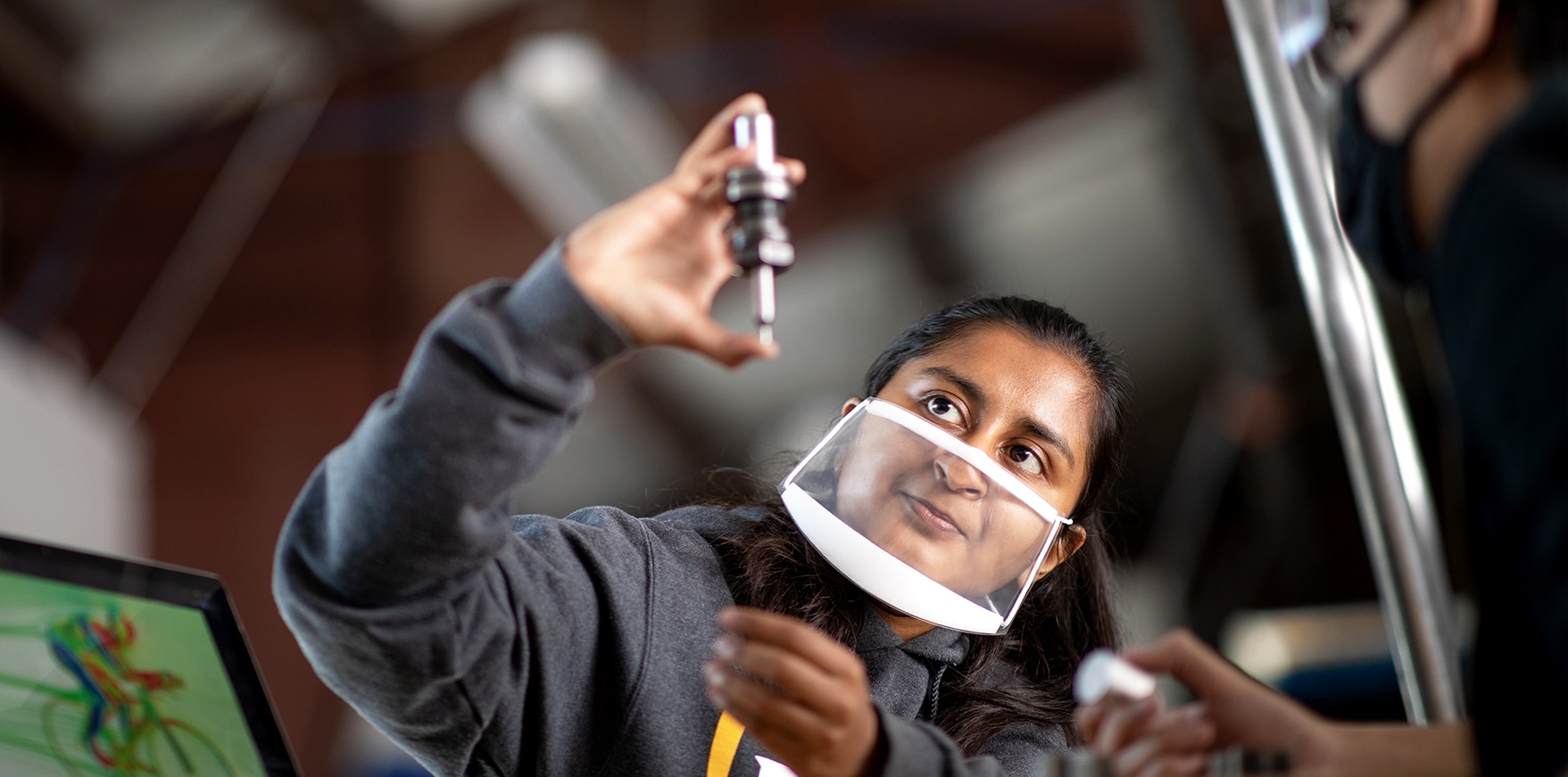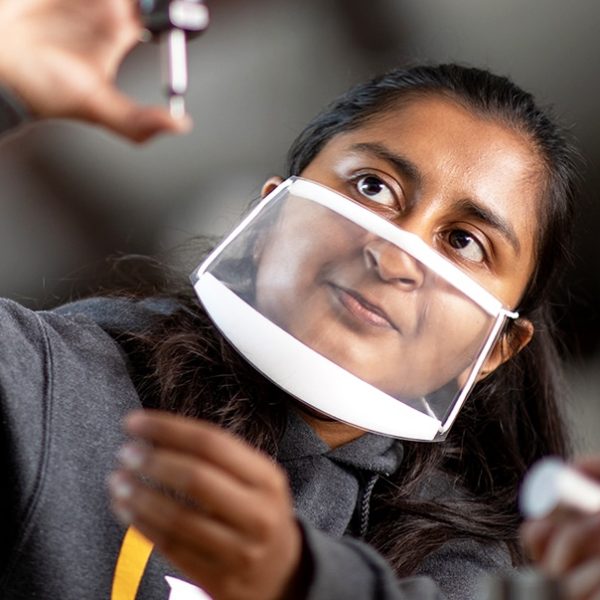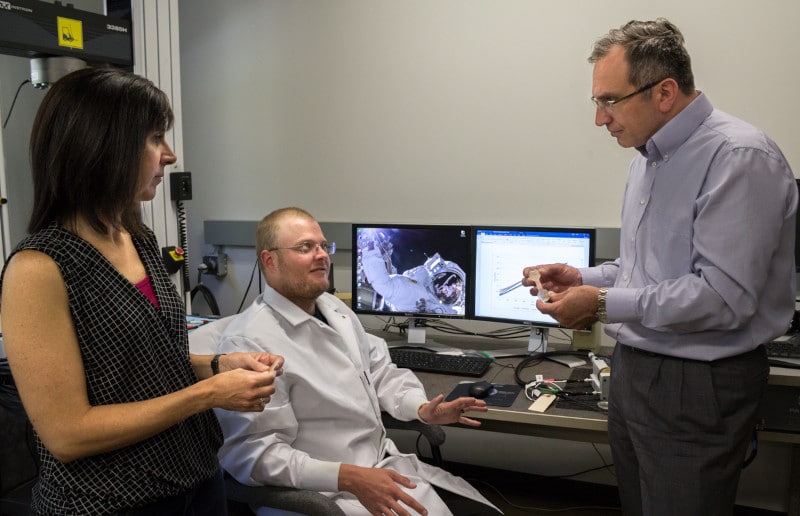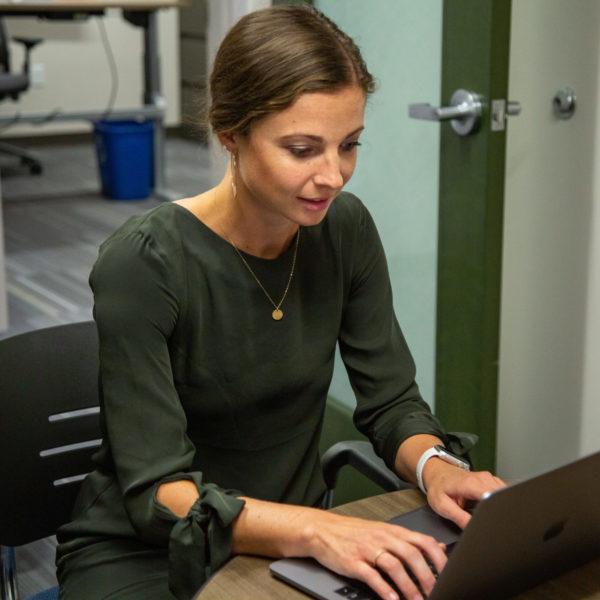At Northern Arizona University, the next generation of engineers is learning to design and build a safer, healthier, and more sustainable future.
Engineering for climate change
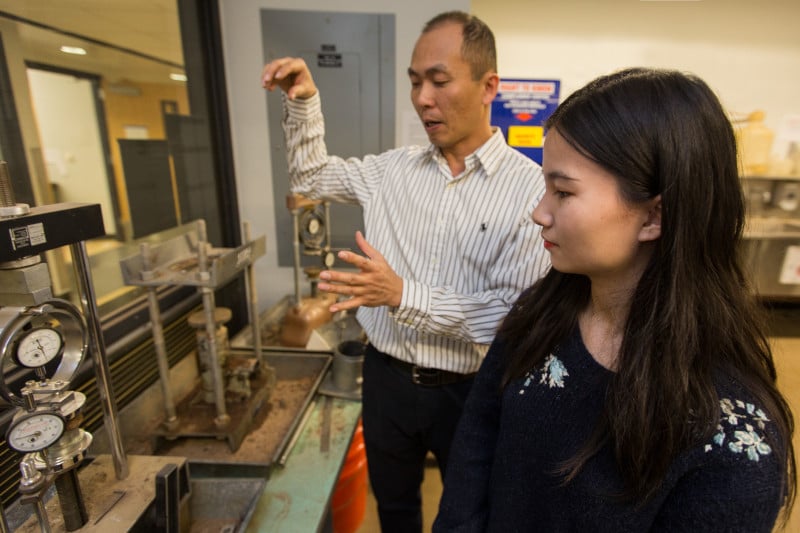
The altered weather patterns brought by global climate change present unique challenges to civil engineers. Students like future environmental engineer Ziyan Wu are learning to apply research to mitigate the effects of climate change. Wu’s research will help engineers divert and control one of the planet’s most precious resources: water. Through computer modeling, she created a new Intensity-Duration-Frequency curve, which engineers can use to build infrastructure like storm sewers and drains to accommodate expected rainfall patterns—patterns that are changing dramatically as the planet warms.
Wu’s mentors, including Assistant Professor Amin Mohebbi and Associate Professor Chun-Hsing Ho in NAU’s Department of Civil Engineering, Construction Management, and Environmental Engineering, encouraged her to participate in research. Doing the research has made Wu realize that her ultimate goal is to become a professor so she can continue to do research and instruct students.
“I’d like to inspire other students to get involved in research,” Wu said.
Bioengineer develops 3D simulations of sneezing, coughing to help motivate social distancing
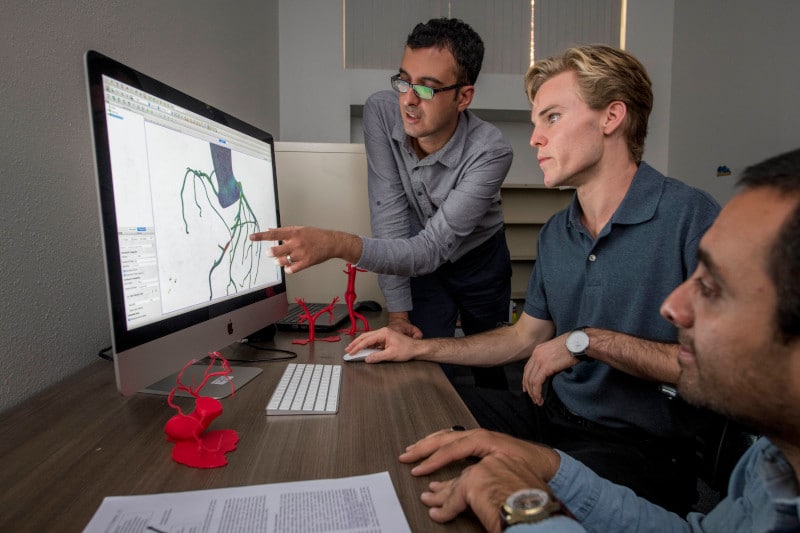
Amir Arzani, Assistant Professor in NAU’s Department of Mechanical Engineering, studies the mechanisms behind the initiation and progression of different cardiovascular diseases, developing computational models that can capture the multiscale and multiphysics nature of cardiovascular disease. Arzani’s team is using these computer simulation techniques to study the mechanics of sneezing and coughing.
“We see an excellent opportunity here for fundamental fluid mechanics research and how it could be used to provide social distancing guidelines,” Arzani said.
A ‘major step forward’ in improving safety, reliability, and material efficiency

Every day, Americans rely on engineered systems such as bridges, buildings, and offshore structures that are subject to extreme weather, earthquakes, and a range of other conditions. Knowing how materials used in these systems respond to stressors is crucial to creating components that successfully and efficiently do the job.
Heidi Feigenbaum, Professor in NAU’s Department of Mechanical Engineering, is developing a mathematical model that will more accurately predict how materials used in engineered systems will fail under cycles of twisting, pulling, and pushing. This model has the potential to reduce structure weight, minimize cost, and maximize material efficiency—leading to safer and more reliable systems.
“We will develop a means to predict and analyze ratcheting failure in ductile metals such as steel and aluminum, which can be leveraged to improve safety, reliability, and material efficiency in a wide variety of structures and systems,” Feigenbaum said. “This fundamental research will be a major step forward in the field.”
Advanced clean energy technology combines structural support with power storage
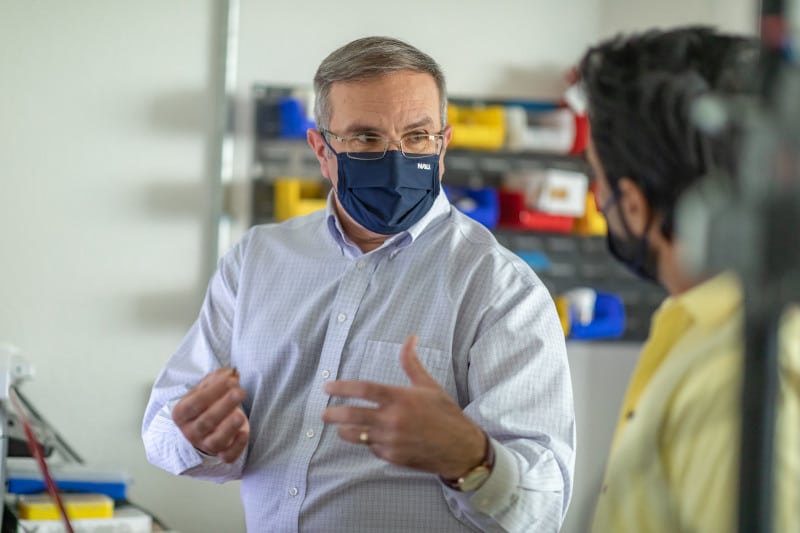
Constantin Ciocanel, Professor in NAU’s Department of Mechanical Engineering, has co-invented, with organic chemistry Professor Cindy Browder, an innovative, patented technology designed to advance the field of clean energy. The material’s design combines elements of composite materials with a power storage mechanism specific to supercapacitors. Made of carbon fiber layers bonded with a solid polymer resin capable of conducting electricity, the multifunctional material can be molded without compromising strength or durability.
“The idea was triggered by the realization that we are surrounded by structures with large surface areas, such as walls, solar panels, and wind turbine blades,” Ciocanel said. “I wondered whether a structural material could provide the mechanical strength required while simultaneously storing electricity.”
Medical device engineer develops innovative biomaterial for treatment of cerebral aneurysms
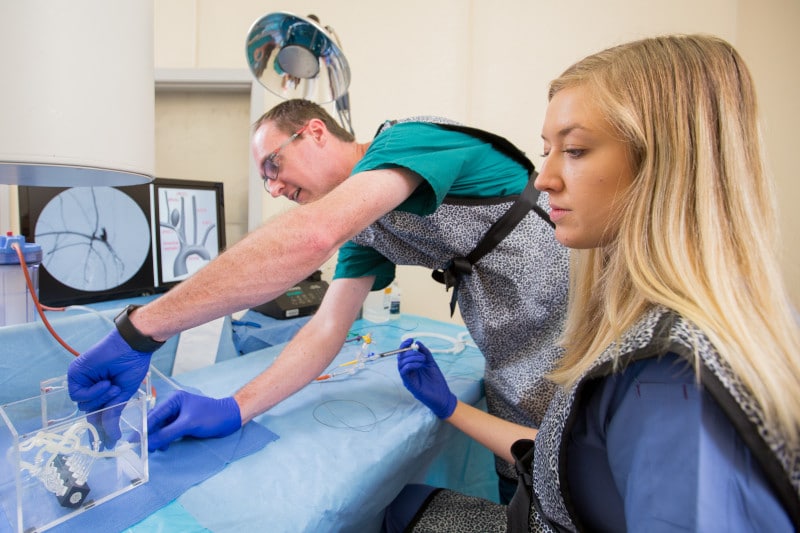
According to the Brain Aneurysm Foundation, 6.5 million people in the United States have unruptured cerebral aneurysms, and nearly 30,000 will suffer from a ruptured aneurysm each year. Only one in four will make a full recovery.
Timothy Becker, Associate Professor of Practice in NAU’s Department of Mechanical Engineering, is developing a polypropylene glycol-based biomaterial similar to body tissue to treat aneurysms in the brain and improve outcomes for stroke patients. Becker believes the material can effectively plug the ballooning aneurysm, enable tissue to regrow over the material, and heal the main vessel.
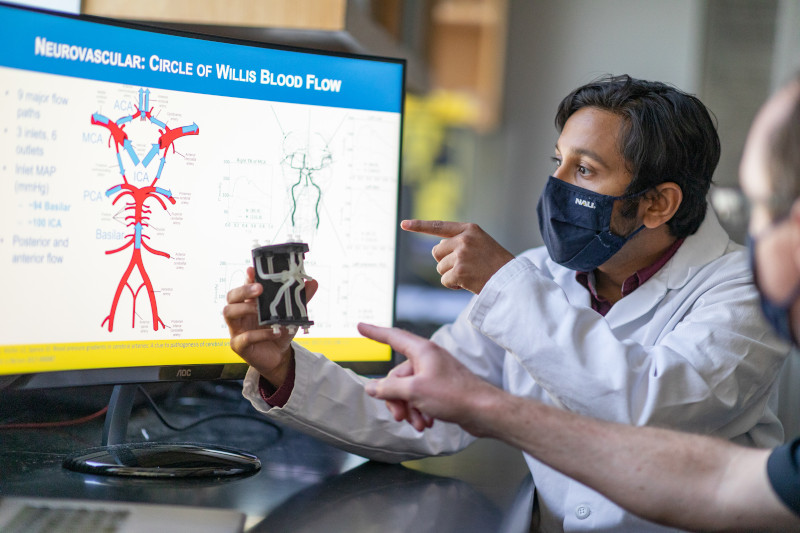
“NAU researchers, including engineering, physics, and biomedical sciences students, will create new benchtop blood vessel models with properties that are similar to human vessels, to test how well biomaterials can stop blood flow and treat the aneurysm,” Becker said.

